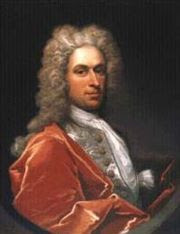As all good readers of the Bacon’s Rebellion blog know, Nathaniel Bacon, instigator of Virginia’s first rebellion against the English crown and inspiration for 21st-century Virginia rebels against outmoded institutions, was a genuine hero. Representing the common man against the minions of the monarch, he championed the rights of free-born Englishmen in 1676, long before anyone had articulated the principles enumerated in the Declaration of Independence.
In recent years, the rise of politically correct thinking has been unkind to Nathaniel Bacon. Historians and commentators, many of whom spread their heinous ideas on the Web, observe that Bacon organized the frontiersmen to fight Indians, and take it upon the word of his enemies that he massacred a tribe of friendlies. Thus, Bacon stands in a long line of Europeans, from the Spanish overthrow of the Aztecs and Incas to the murderers at Wounded Knee, for the indiscriminate genocide of native Americans.
Now comes a much-needed revision to the revision, and it comes at the hands of Richard L. Thornton, a Muscogee Indian, who has intensively researched the largely ignored colonial-era history of native Indians of the Southeastern United States. In his essay published here, “Berkeley the Butcher,” Thornton makes a persuasive case that Gov. William Berkeley was the bad guy, thus, by implication, salvaging Bacon’s reputation.
Berkeley, Thornton reminds us, was a zealous partisan of the Stuart kings. Appointed as royal Governor of Virginia in 1642, he returned to England to fight on the side of the monarchs during the English Civil War. He returned to Virginia, where he suppressed the Openchoncanough Indian Uprising, was deposed by Oliver Cromwell, and then reappointed Governor in 1660. Less known to Virginians, Berkeley also was named one of eight Lord Proprietors of the Colony of Carolina, which consisted of what is now North Carolina, South Carolina and Georgia. As Thornton notes, “The Royal Proprietors planned to become unimaginably wealthy by subdividing and selling their eight ‘duchies’ into feudal estates with titled nobility.”
In 1660, Berkeley pushed laws through the Virginia assembly that officially recognized the institution of race-based slavery, and codified laws removing any legal rights from slaves. Up to that time, Native American and African slaves were theoretically bond-servants. After that time, they were chattel for life. Nice guy, that Berkeley.
As it so happened, Berkeley had a personal interest in the enslavement of native Americans. Thornton writes that Berkeley armed the Rickohocken tribe, located in western Virginia, with firearms and sent bands of warriors southward “to capture slaves for Virginia’s tobacco plantations.” These Indians, whom history came to know as the Cherokee, he theorizes, plundered far and wide, largely depopulating the Carolinas of the native tribes. This genocide against native Americans was committed by other native Americans — with the aid and complicity of Gov. Berkeley.
How does this relate to Nathaniel Bacon? Writes Thornton: “It is theorized that one of the primary reasons that Berkeley refused in 1675 to authorize large-scale resistance to Indian raids on the Virginia frontier, was his long-time business relationship with the three branches of the Rickohockens.” In other words, Berkeley was trying to protect his buddies who were conducting slave-trading raids in the Carolinas! Whether you accept this theory or not, you should read Thornton’s essay for a glimpse into a fascinating and little-known era of Virginia history.
(Photo credit of Gov. Berkeley: Wikipedia. C’mon, just look at the guy. Velvet jacket, flouncy shirt, curly wig… Who’re you going to believe — him or Nathaniel Bacon?)


Leave a Reply
You must be logged in to post a comment.